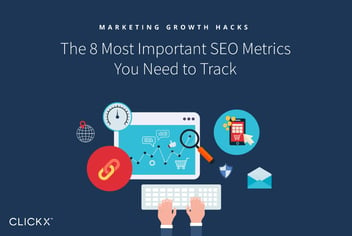How to Monitor Digital Marketing Results for Maximum Success

Tracking the success of your marketing campaigns is one of the most important steps in promoting your products and services. However, most business owners stop at checking analytics. While this is a good start, it usually isn’t enough to get real insights about the state of your marketing.
To understand if you’re nailing your marketing strategy, you need to examine your results. Rather than just knowing your numbers, you need to understand what they mean and what influences them. By taking a closer look and identifying red flags or temporary factors that may be impacting your metrics, you can begin to make improvements.
Let’s take a look at how you can monitor your digital marketing to ensure maximum success!
Key Takeaways:
- Tracking your marketing success helps you identify what is working and what isn’t with your target audience.
- Your conversion rate and average session duration will tell you if your audience considers your content to be high-quality.
- Understanding your bounce rate will help you keep retain visitors more effectively.
Why Tracking Your Marketing Is So Important
The success of your marketing ultimately depends on how well you connect with your target audience. While you may think you know what your audience is looking for, you may at times be surprised to find that you were completely off the mark. If you’re not constantly looking out for and identifying your mistakes, and then changing your approach accordingly, you could be missing out on sales.
Tracking the success of your marketing campaign can give you new insights into your customers’ preferences and behaviors, helping you develop strategies that make a bigger impact. Efficient tracking can also help you stop any unsuccessful campaigns before they get too far, and instead focus in on strategies that are performing well.
2 Metrics to Look for When Tracking Your Marketing Results
To ensure that you’re properly tracking your marketing results, here are the primary metrics you should be monitoring.
1. Conversion Rate
Your conversion rate is the number of leads who become customers. While it is important to know how many leads you’re attracting and how many new visitors are reaching your website, if they’re not converting into paying customers, your business won’t grow. This is why your conversion rate is one of the most important metrics to monitor.
Tracking your conversion rate can help you determine how strong the content you’re creating is. If your conversion rate spikes during a certain campaign, you’ll know that approach is resonating well with your target audience. Likewise, a drop in conversions would signal that your content isn’t as effective. Ideally, you’ll want your conversion rate to be around 5%, although the average in most industries is about 2%.

Of course, simply knowing your conversion rate isn’t enough. In order to properly understand what it means, you need to look at certain factors that may impact that rate. These can include viral content, such as the above example from Dove, or changes in a competitor’s pricing. Knowing these outside factors that can swing your conversion rate in one direction or the other can help you identify why you aren’t seeing enough conversions, and make a correction.
[Tweet “If your conversion rate is low, you’ll need to ramp up your marketing with some stronger content.”]
If you find that your conversion rate is too low, you’ll need to ramp up your marketing with some stronger content. Identify the pieces your target audience is connecting strongly with, and develop similar content that can more appropriately move them through the sales funnel. Similarly, pay attention to those times when your conversion rate is high, and look to duplicate the efforts that prompted the increase.
2. Average Session Duration
Average session duration is the amount of time each individual spends on your website during one visit. Knowing how long users are staying on your site can help you better understand how much time it takes them to make a purchasing decision, whether or not they’re finding your information useful, or if you’re overwhelming them with content.
For example, you can find our average session duration under the Web Analytics section of the Clickx app:

When a new visitor comes to your site, you want them to spend time learning more about you and the products or services you offer. The more time they spend on your site, the higher your chances will be of encouraging them to make a purchase. However, the factors influencing your average session duration aren’t always clear. That’s why you need to look deeper into the behaviors behind this metric.
If your visitors are spending a lot of time on one page and then leaving, for instance, this may be an indication that the page is confusing, or overwhelming people with too much information. This can push potential customers away. Likewise, if visitors are only spending a few seconds on each page, you may not be providing enough content, or what you are offering isn’t interesting enough to hold their attention.
On average, you have about 59 seconds to generate interest before a website visitor decides to leave. You can catch their attention and keep them around by making your content interesting, relevant, and different than what is already available online. Content that is valuable and targeted to your ideal customer will keep them on your site longer, which will then be reflected in your metrics.
Bonus: Bounce Rate
Your bounce rate is the percentage of visitors who come to your site, view only one page, and then leave. That one page can be your homepage or any other internal page. Your bounce rate is crucial, because it tells you whether your site is retaining visitors.
Your bounce rate will depend on a number of different factors. For example, the source of your traffic influences how long people stay. User experience also plays a part in how many pages your audience will check out before leaving, as does quality. If your site is difficult to navigate, slow, or outdated, visitors will be more inclined to leave.

Your bounce rate is clearly displayed in Google Analytics and similar tools. While you ideally want your bounce rate to be 0, this is nearly impossible for any site to accomplish. An average bounce rate is between 40% and 50%, and under 40% is considered a great place to be. If your bounce rate is above 55%, on the other hand, you may want to make some changes.
When considering how to improve your bounce rate, take a look at the pages your visitors are leaving from. Some pages, such as blog posts, typically have high bounce rates. If a specific kind of page is hurting your bounce rate, try to look for ways to move visitors along to another page on your site, such as by suggesting similar blog posts. If most bounces are happening from your home page, you may need to consider a redesign.
Conclusion
Properly tracking the success of your digital marketing is crucial for finding the strategies that work best for you and your audience. Knowing what red flags to look for can help you improve your marketing campaigns, and grow your business.
Let’s recap the three metrics you should be looking at when monitoring your marketing:
- Track your conversion rate to see how strong your content is.
- Know your average session duration to understand your content’s perceived quality.
- Monitor your bounce rate to see if your content is holding attention.
How do you think monitoring these metrics will improve your marketing strategy? Let me know in the comments below!



